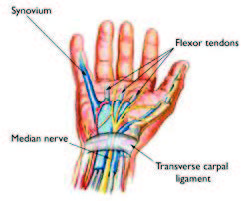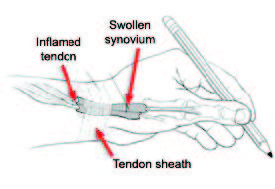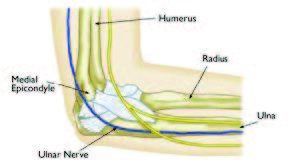3 Hand Conditions That Could Impact Employee Productivity
 By Dr. Ben Zellner, OSMS Fellowship-Trained Orthopedic Hand-to-Shoulder Specialist
By Dr. Ben Zellner, OSMS Fellowship-Trained Orthopedic Hand-to-Shoulder Specialist
Dr. Zellner is seeing patients at our clinics in Green Bay and Marinette. Schedule an appointment with him here.
Whether it’s working at a computer, driving a commercial vehicle, or operating large equipment, full function of the hand and wrist is essential to many work-related responsibilities. This means over the years these areas could suffer from overuse, increasing the likelihood of developing a condition that could affect a person’s professional life.
 One of the most well-known conditions is Carpal Tunnel Syndrome, which occurs when the median nerve becomes squeezed or compressed as it travels into the hand. It causes pain and numbness in the thumb, index, middle, and ring ringers. Symptoms might also include weakness and clumsiness of the hand that could reduce the ability to perform smaller movements and increase the likelihood of dropping things.
One of the most well-known conditions is Carpal Tunnel Syndrome, which occurs when the median nerve becomes squeezed or compressed as it travels into the hand. It causes pain and numbness in the thumb, index, middle, and ring ringers. Symptoms might also include weakness and clumsiness of the hand that could reduce the ability to perform smaller movements and increase the likelihood of dropping things.
 A second condition is De Quervain’s Tenosynovitis. Swelling of the tendons at the base of the thumb can cause pain and tenderness along the thumb side of the wrist. Symptoms are most often experienced while grasping or grabbing an object or when turning the wrist.
A second condition is De Quervain’s Tenosynovitis. Swelling of the tendons at the base of the thumb can cause pain and tenderness along the thumb side of the wrist. Symptoms are most often experienced while grasping or grabbing an object or when turning the wrist.
 Cubital Tunnel Syndrome is a third condition that could limit a person at work. When the ulnar nerve becomes compressed or stretched at the elbow joint, symptoms are typically felt in the hand and could include numbness, tingling, or pain in the pinky side. Additionally, people could experience a weakened grip or loss of finger coordination in activities like typing and buttoning clothing. Cubital Tunnel Syndrome could be caused by years of repeatedly bending the elbow or leaning on the elbow for long periods of time.
Cubital Tunnel Syndrome is a third condition that could limit a person at work. When the ulnar nerve becomes compressed or stretched at the elbow joint, symptoms are typically felt in the hand and could include numbness, tingling, or pain in the pinky side. Additionally, people could experience a weakened grip or loss of finger coordination in activities like typing and buttoning clothing. Cubital Tunnel Syndrome could be caused by years of repeatedly bending the elbow or leaning on the elbow for long periods of time.
All three of these upper extremity conditions can be treated with non-surgical methods such as:
- Splinting or bracing to allow the affected areas to rest and repair
- Taking anti-inflammatory medications to reduce swelling and relieve pain
- Modifying activities to avoid symptom aggravation
- Corticosteroid injection
The goal of any treatment plan is to relieve symptoms and restore function in the long-term so that patients can get back to work and back to life. Therefore, if symptoms stop responding to treatments or quality of life is significantly affected by pain and limited function, surgical options are available. Most of these surgeries can be performed in an outpatient surgical setting.
Schedule an appointment with one of our hand specialists clicking here.









